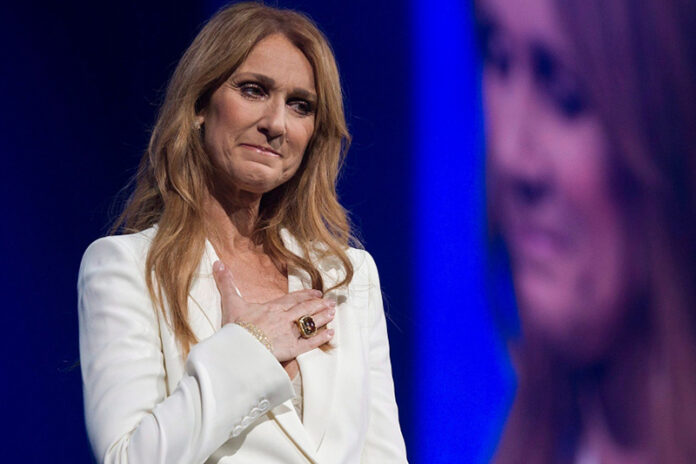
In an inspiring turn of events, the legendary Céline Dion has taken to her platform to share her battle with a rare and challenging condition known as Stiff-Person Syndrome (SPS). The five-time Grammy winner, at 55, has announced that Amazon MGM Studios will be showcasing her journey in a documentary titled I Am: Céline Dion, set to debut on Prime Video. This move not only shines a light on her indomitable spirit but also raises awareness about a condition that remains little known to the public.
What is Stiff-Person Syndrome (SPS)?
Stiff-Person Syndrome (SPS) is a rare, debilitating neurological disorder with distinctive features that set it apart from other neurologic conditions. It is characterized by fluctuating muscle rigidity and painful spasms in the axial muscles, which include the trunk and spinal muscles. These symptoms are often precipitated or exacerbated by sensory stimuli, such as loud noises or tactile stimulation, and can significantly impact the patient’s ability to perform daily activities.
Understanding the Mechanisms
The exact cause of SPS is not fully understood, but it is believed to be autoimmune in nature. The immune system mistakenly targets specific components of the nervous system, leading to an imbalance in neurotransmitters, particularly gamma-aminobutyric acid (GABA), which is crucial for regulating muscle tone. This imbalance results in the hallmark stiffness and spasms associated with the syndrome.
Prevalence in North America
Determining the exact number of individuals with Stiff-Person Syndrome in North America can be challenging due to its rarity and the potential for misdiagnosis. However, estimates suggest that SPS affects approximately one to two people per million, indicating that there may be between 350 and 700 individuals with SPS in Canada and between 330 and 660 individuals in the United States. These figures underscore the condition’s rarity and the need for increased awareness and understanding among both the public and the medical community.
Diagnosis and Challenges
Diagnosing SPS involves a careful evaluation of symptoms, blood tests for antibodies associated with the syndrome (such as anti-GAD antibodies), and electrophysiological studies to rule out other conditions. The presence of these antibodies can support a diagnosis of SPS but is not definitive on its own, as they can also be found in other disorders.
Treatment Options
Treatment for SPS is primarily aimed at managing symptoms and improving the quality of life for those affected. Medications, including muscle relaxants, anti-spasmodic agents, and immunotherapies, play a central role in treatment. Physical therapy is also crucial for maintaining mobility and reducing the risk of complications associated with muscle stiffness.
The Impact of Awareness and Research
The rarity of SPS poses significant challenges in terms of awareness, diagnosis, and treatment. Increased awareness can lead to earlier diagnosis and more effective management of the condition. Furthermore, research into the underlying mechanisms of SPS and potential treatments is crucial for developing more targeted and effective therapies.
Céline Dion’s public battle with Stiff-Person Syndrome shines a spotlight on this rare condition, potentially accelerating the path to better understanding and management for those affected. Her courage in sharing her journey brings hope and visibility to a community of patients who often feel isolated due to the rarity of their condition.
A Story of Resilience
Céline Dion’s story of resilience in the face of Stiff-Person Syndrome is not just about a global superstar battling a rare disease; it is a profound narrative of human strength, love for art, and unwavering determination. Her journey offers a deeper look into how an individual’s spirit can transcend physical limitations and how passion for one’s craft can serve as a powerful motivator through the toughest times.
For Céline, music and performance are not mere professions but extensions of her being. Despite her diagnosis, she has shown an exceptional commitment to her art, striving to maintain her connection with music and her fans. This dedication is evident in her efforts to adapt her lifestyle and work routines to accommodate her condition. By doing so, Céline exemplifies how creativity can flourish under constraint, and how the act of performing can be both a refuge and a form of therapy.
Embracing Vulnerability
Céline Dion’s openness about her struggles with Stiff-Person Syndrome marks a significant step in her journey. Embracing vulnerability, she has let the world into her most personal battles, thereby challenging the stigma often associated with chronic illnesses. Her honesty not only humanizes her but also builds a bridge of empathy and understanding with others who might be facing similar challenges. This act of sharing creates a community of support and solidarity, emphasizing that no one is alone in their struggles.
The Role of Hope and Optimism
Throughout her career, Céline has been known for her optimistic outlook and her ability to inspire hope through her music. This same optimism is now a cornerstone of her battle with SPS. Despite the uncertainty and the physical challenges, her focus remains on the future, on the possibility of returning to the stage, and on the joy of performing for her fans. This hope is not a naive dismissal of her condition but a strategic choice to focus on what she can control – her attitude, her therapy, and her love for music.
Illuminating the Path Through Awareness and Resilience
The journey of understanding Stiff-Person Syndrome (SPS) and its impact on individuals, as exemplified by Céline Dion’s courageous battle, offers a profound insight into the complexities of living with a rare neurological condition. Céline’s decision to share her story through the documentary I Am: Céline Dion not only brings much-needed attention to SPS but also serves as a source of inspiration and hope for those facing similar challenges.
SPS, with its estimated prevalence affecting a small fraction of the population in North America, remains a largely unknown entity to the general public and a challenging puzzle for the medical community. The condition’s rarity underscores the importance of awareness and education, as these are critical components in improving diagnosis, treatment, and support for individuals living with SPS.
Céline Dion’s resilience in the face of such adversity highlights the power of the human spirit and the importance of perseverance, support, and hope. Her journey is a testament to not allowing a diagnosis to define one’s life but rather finding ways to adapt and continue pursuing one’s passions. It is a reminder of the significant role that awareness and advocacy play in the lives of those with rare diseases, paving the way for better research, treatment options, and ultimately, a better quality of life.
In conclusion, the conversation around Stiff-Person Syndrome, propelled into the spotlight by Céline Dion’s heartfelt narrative, is a beacon of awareness and empathy. It underscores the critical need for continued education, research, and advocacy to support those affected by rare conditions. As we move forward, let us carry the message of resilience, hope, and the enduring power of the human spirit, inspired by Céline’s journey, to foster a more inclusive and supportive world for all.













